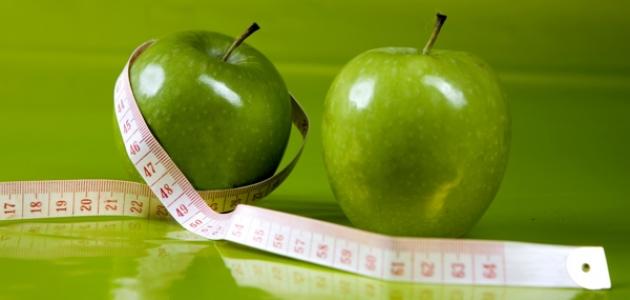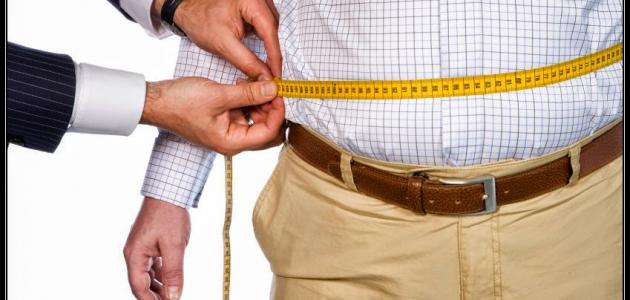Weight loss
Weight gain usually occurs due to consuming more calories than the body needs, while weight loss occurs as a result of following a diet and exercising, and usually what causes weight loss in most cases is the loss of fat mass in the body, but in cases of dieting Too harsh, or losing too much weight, the body may lose protein and other elements. It is worth noting that losing weight, even by a small percentage, provides many health benefits for the body. As the Centers for Disease Control and Prevention (CDC) indicate that losing 5-10% of body weight improves blood pressure, blood sugar and cholesterol levels as well.
Can you lose 10 kilos in a week?
Many people resort to some wrong ways to lose weight. Such as: eating small amounts of calories, following harsh diets, or exercising a lot, but healthy and safe weight loss consists of losing between 0.45 to 0.9 kilograms per week, or half a kilo to kilograms per week, but it is possible for the body to lose more than this rate by combining diet and exercise, and some may notice a rapid descent in the initial period and this is considered normal; This is because the weight that was lost during this period is called water weight.
Read also:The benefits of the herb Al-Sharq for slimmingThis is due to the fact that consuming fewer calories than the body burns causes the energy stores to start releasing; Which is known as glycogen (in English: Glycogen); Which is linked to water, so when it is burned as an energy source, the body liberates water, and it is lost at the beginning of the weight loss journey. Therefore, the amount of weight loss is greater, and it should be noted that the rapid loss of weight leads to the loss of water, muscle mass, and bone instead of losing fat, so experts have recommended the necessity of gradual weight loss.
It may be better for people who are trying to lose weight not to rely on the scale to monitor their conditions, as they may be advised sometimes to focus on the amount of fat lost by the body instead of focusing on the number of kilograms, as the loss of fat leads to a change in the structure of the body, to increase the proportion of muscles, Which causes beneficial changes in the body that the scale does not show, and it is possible to know whether the body is losing fat in several ways, including: taking body measurements, or using a balance that measures the percentage of fat in the body, and other methods, so taking body measurements gives information about the structure of the body more than Weight, and the greater the proportion of muscles in the body; The body was healthier, regardless of weight.
Factors associated with losing weight faster
There are some factors that may be associated with faster weight loss in some groups compared to others, and we mention the following:
Read also:How to lose weight quickly in a week- Men lose weight faster than women: Men have a higher proportion of muscle tissue compared to women, and muscles cause more calories to be burned compared to adipose tissue, so when men and women eat the same amount of calories; Men lose more weight, but this effect is short-term. When you continue with the diet, the percentage of weight loss becomes similar between men and women.
- Young people lose weight faster than adults: The process of losing weight may become more difficult with age, but this does not apply to everyone. As weight loss or gain differs from one person to another, genes have a role in that, but in general it can be said that advancing age leads to a slowdown in the body's metabolism, and a change in hormones; Especially for women in menopause.
- Overweight people lose weight faster than lower weight people: People who have a higher weight tend to lose more weight than people who have less weight, but the percentage of weight loss for everyone is close; For example: a person weighing 136 kilograms can lose 4.5 and a half kilograms of weight within two weeks when reducing 500 calories from his daily consumption, while a person weighing 68 kilograms may lose 2.3 kilograms when reducing 500 calories for two weeks.
How can you follow a diet to lose weight
- Know the calories needed for each person: The amount of calories a person needs daily varies based on several factors; Such as his age, gender, weight, height, and daily activity, and the amount of calories that are recommended to be consumed varies according to the person's goal; That is, if they are both trying to lose weight, maintain it, or gain it, but in general, women's daily calorie needs are estimated between 1600-2400 calories, while men's needs range from 2000 to 3000 calories, and for weight loss it is advised to reduce between 500-1000 calories from the daily caloric requirement, and this results in a loss of between half a kilogram to approximately one kilogram per week.
- Divide calories by food groups: Eating a variety of foods from different food groups is important for maintaining health, as each food group contains nutrients important for health, and consuming the recommended amounts of these groups is linked to maintaining health, and we mention in what follows these food groups, and the recommended amounts of each group for one person Needs 2000 calories per day:
- Vegetables: two and a half cups of fruits and their alternatives.
- Fruits: two cups of vegetables and their alternatives.
- Cereals: 6 servings (28 serving equals XNUMX grams of cereal substitute)
- Dairy products: for children 3-4 years old (8 cups), children 8-3 years old (XNUMX XNUMX/XNUMX cups), and people over XNUMX years old (XNUMX cups).
- Protein: 5 and a half servings (one serving equals 28 grams of protein substitute).
- Oils: 27 grams (or the equivalent of 5 teaspoons of oils).
- As it was noted, these rations are for 2000 calories, that is, they are not fixed for everyone. Therefore, visiting a nutritionist to determine the calories the body needs and their quantities, and the appropriate method for losing weight is an essential and important matter, as the specialist will help plan a healthy and applicable diet. Taking into account the person's health condition, medical history, lifestyle, and choices.
- Follow a daily food plan or program: Many magazines, websites, and television advertisements promote some diets that claim to be suitable for all people. In fact, there is no one diet that is suitable for all people. Some diets may be suitable for some people, but they may be harmful to others, but in general, as previously mentioned; In every main meal, a person needs a mixture of the previously mentioned food groups, and in the following is an example of how foods are distributed over meals to include all food groups in balanced quantities:
- The number of alternatives according to the daily calorie needs
| the meal | 1200 calories | 1300 calories | 1800 calories |
|---|---|---|---|
| Breakfast |
|
|
|
| Snack | One serving of fruits | One serving of fruits | One serving of fruits |
| the lunch |
|
|
|
| Snack | One serving of fruits | One serving of fruits |
|
| Isha |
|
|
|
| Snack | One serving of milk | One serving of milk |
|
Read also:The benefits of a sauna suit for slimming
Weight loss tips
Here are some effective methods that are recommended to be followed to lose weight:
- Track and log food and exercise: Recording each type of food intake and exercise and its times is a useful way to lose weight, as it makes people pay attention to what they consume during the day.
- Eat protein for breakfast: As the hormonal effect of eating protein for breakfast can last for hours after eating it, and eating proteins helps to feel full by regulating appetite hormones, and this is often due to a low level of hunger hormone; Which is known as ghrelin (in English: Ghrelin), and the high level of satiety hormones; as peptide YY (in English: Peptide YY), cholecystokinin (in English: cholecystokinin), and glucagon-like peptide-1; Which is known as GLP-1, and it is worth noting that good and high-protein sources must be chosen. Such as: oats, eggs, sardines, nut and seed butter, quinoa porridge, and chia seed pudding.
- Limit consumption of sugar and refined carbohydrates: As this type of carbohydrate does not contain fiber or nutrients; This is due to the processing and manufacturing processes, as it is quickly digested, and is converted into glucose (in English: Glucose); whose height leads to weight gain; This is due to its urging insulin to promote the storage of fats in the adipose tissue. Examples of these refined carbohydrates are: white rice, bread, and pasta.
- Increase your fiber intake: Such as: whole grains, nuts, fruits, and vegetables; As fiber increases the feeling of satiety, and the small intestine does not digest unlike carbohydrates and sugar, which may lead to weight loss.
- Follow the intermittent fasting system: (In English: Intermittent fasting); Which is known by following a specific eating pattern, in which food is abstained for a short period on a regular basis, and meals are consumed during a shorter period of time during the day, and it has several methods, as follows:
- 16/8 system; Where food is abstained for a period of 16 hours, and it is eaten only during the eight-hour period, and this period can extend from the hours of noon to eight in the evening, and according to what a study conducted on this system indicated that eating food in specific periods led to the consumption of fewer calories and the participants' weight loss.
- system of interchange of fasting days; That is, fasting day after day, and in this system only 25 to 30% of the calories consumed by the body are consumed during the days of fasting, while the rest of the days are eaten normally, but it should be noted that overnutrition must be avoided, and a dietary pattern should be followed. Healthy during the days when food is not abstained.
- 5:2 system; As in this system, food is abstained for two days out of seven days, and during fasting days, approximately 500 to 600 calories are eaten.
- Take enough rest: As not sleeping enough time can lead to feeling hungry, and it becomes difficult to lose weight. This is because it enhances the secretion of the hormone ghrelin, and reduces the secretion of the satiety hormone. Which is known as leptin (in English: Leptin).
- High-intensity exercise: Incorporating high intensity interval training into a regular exercise pattern is one of the most effective ways to burn calories.
- Drinking more water: And that instead of drinks full of sugar that cause obesity; Such as: flavored coffee, sports drinks, and soft drinks; Which are full of hundreds of calories.
- Eat moderate amounts of healthy fats: such as avocados, nuts, olive oil, vegetable oils, and nut butters.









